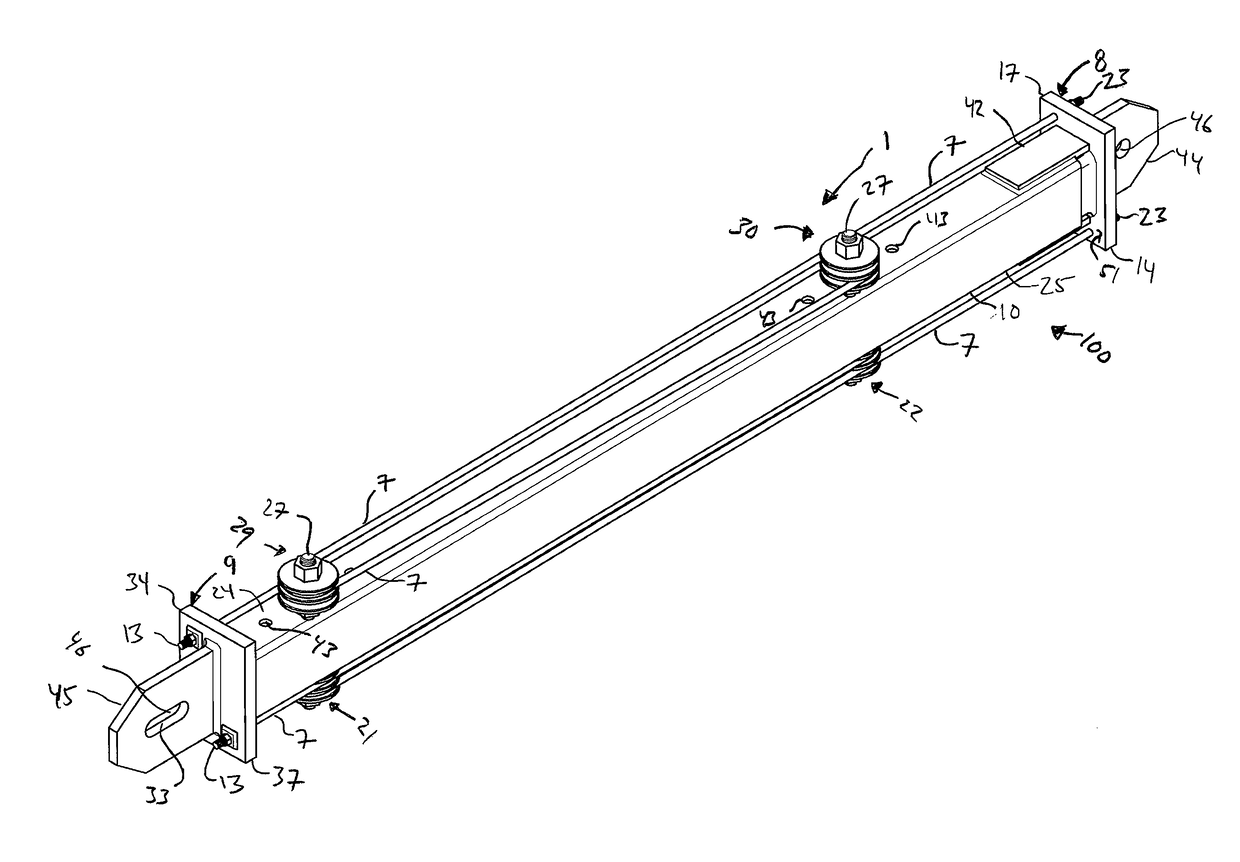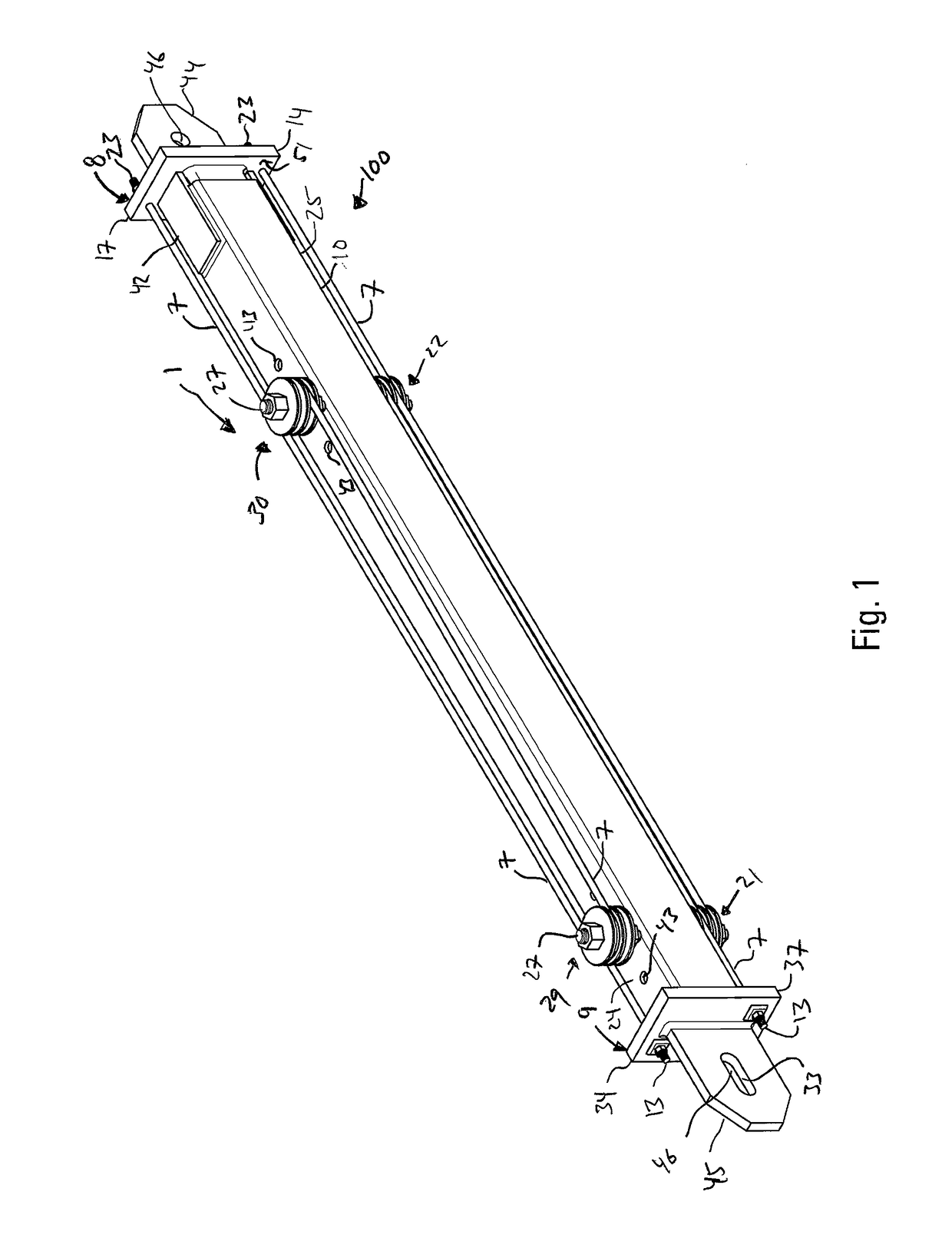Self-centering braced frame for seismic resistance in buildings
a self-centering brace and building technology, applied in the direction of girders, joists, trusses, etc., can solve the problems of red tag, complete collapse, loss of use,
- Summary
- Abstract
- Description
- Claims
- Application Information
AI Technical Summary
Benefits of technology
Problems solved by technology
Method used
Image
Examples
Embodiment Construction
[0040]The present invention provides an elongated, tension-only or centering brace 1 in a frame 2 for a structure, such as a building, where the brace is anchored at a first attachment point 3, typically, the first attachment point would be along an upstanding post or column 4, and where the brace is anchored at a second attachment point 5 that is removed from the first attachment point 3, typically at a point somewhere along a beam 6. The elongated tension-only brace has one or more elastic restoring force elements 7 that have effective lengths greater than the distance between the first and second attachment points, where the brace 1 is anchored. The effective lengths of the elastic restoring force elements are long enough such that they do not stretch beyond their yield points under selected design loads, such as those caused by an earthquake. Typically the vertical columns and horizontal beams of the frame that would use such a brace would be made from steel “W” sections which h...
PUM
 Login to View More
Login to View More Abstract
Description
Claims
Application Information
 Login to View More
Login to View More - R&D
- Intellectual Property
- Life Sciences
- Materials
- Tech Scout
- Unparalleled Data Quality
- Higher Quality Content
- 60% Fewer Hallucinations
Browse by: Latest US Patents, China's latest patents, Technical Efficacy Thesaurus, Application Domain, Technology Topic, Popular Technical Reports.
© 2025 PatSnap. All rights reserved.Legal|Privacy policy|Modern Slavery Act Transparency Statement|Sitemap|About US| Contact US: help@patsnap.com



